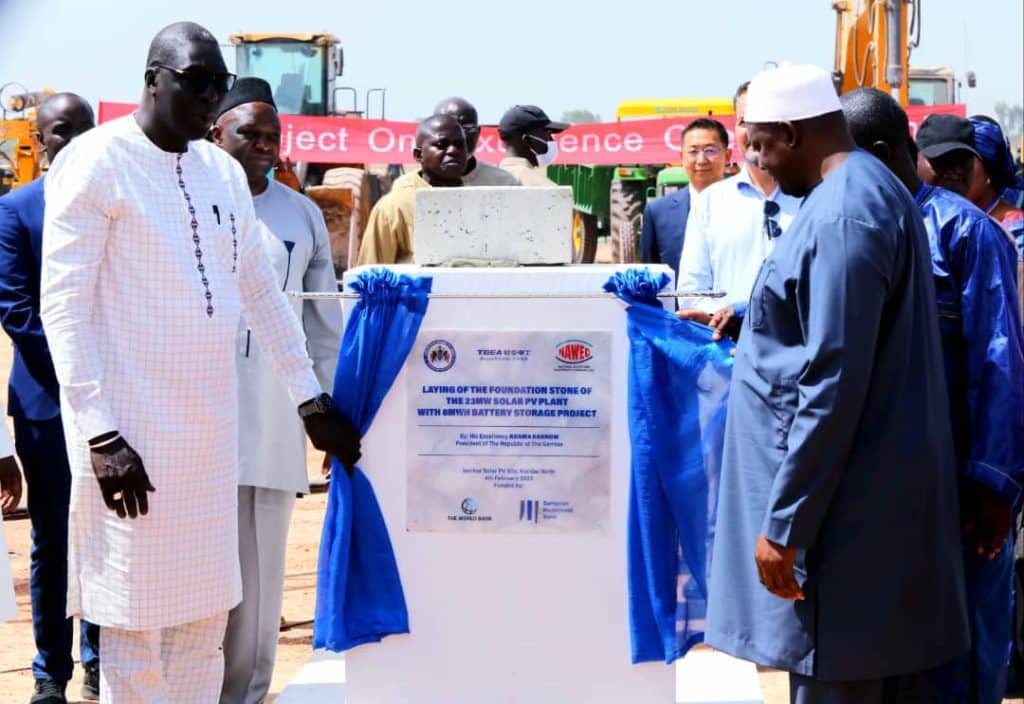The President of the Republic of The Gambia Adama Barrow was in Jambur on 4 February 2023 for the ground-breaking ceremony of a 23 MW solar power plant, the largest solar park in the country, which will be used to reinforce the grid of the state-owned Gambia National Water and Electric Company (NAWEC).
The Jambur solar plant is being built under the Gambia Electricity Restoration and Modernisation Project (GERMP). This World Bank-supported initiative was launched to improve electricity generation capacity and transmission system efficiency in order to increase access to electricity “for socio-economic development” in The Gambia. With an estimated population of more than 2.5 million, this West African country has an electricity access rate of more than 62% according to the World Bank’s 2020 report.
The construction site entrusted to the Chinese company TBEA
In addition to the World Bank, the construction of the Jambur solar power plant is also being financed by the European Investment Bank (EIB). According to NAWEC, the plant, which has been entrusted to the Chinese company TBEA, should also enable Gambia to diversify its electricity mix.
Read also- GAMBIA: the World Bank and Europe allocate €164 million to renewable energy
“The project will promote the extension, reliability and quality of energy supply at the national level, as well as the diversification of energy sources to include renewable energies,” says the public company. Currently, solar accounts for only 2% of The Gambia’s electricity mix. This capacity is expected to increase with the construction of a 150 MWp regional solar park, the feasibility study for which was recently validated.
The photovoltaic park will be installed in two phases on a 225-hectare site identified since 2019 by the Gambian authorities, in Soma, a town located in central Gambia, near the border with Senegal. This is a strategic site as it is located near a 225/30 kV substation of the Gambia River Basin Development Organization (OMVG). Part of the output of this regional solar power plant will be fed into the Gambia’s electricity grid through the West African Power Pool (WAPP).
Jean Marie Takouleu
